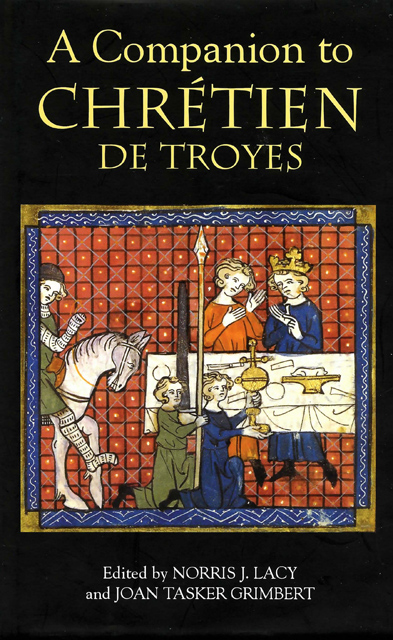14 - The Continuations of the Conte du Graal
Published online by Cambridge University Press: 23 March 2023
Summary
Left unfinished, the Conte du Graal was soon provided with its first continuation. The last lines of Chrétien's romance virtually cry out for a sequel, since the narrative breaks off in mid-episode: a squire, entrusted by Gauvain with a message for Arthur, has just arrived at court in Orcanie. It is easy enough to imagine what is to follow: the happiness of the royal couple when they hear that Gauvain is well and the departure of the court for the Roche de Champguin where Arthur's nephew is to face Le Guiromelant. However, beyond this imminent turn of events, the Conte leaves us wondering about Perceval's fate, the Bleeding Lance and the Grail. Chrétien's incomplete romance presents the problem of how to end it: how to resolve the enigmas linked to the Grail, the Lance and the Fisher King, and what roles to attribute, respectively, to Perceval and Gauvain.
Any continuation project necessarily requires that further developments be harmonized with the original text. The Conte du Graal imposed the following constraints in particular:
– preserving a precise temporal and spatial context: the kingdom of Logres in Arthur's time, sharing frontiers with the lands of Galloway and those of the Fisher King, at the very gates of the Other World;
– organizing the narrative around the characters of Perceval and Gauvain, just as Chrétien had presented them;
– achieving the goals the Ugly Damsel had set for Arthur's knights using the Chastel Orguellos (vs. 4689), where one can test one's valour, and Montesclaire (vs. 4706), where a besieged maiden awaits her deliverance;
– fulfilling the prophecies announced by several characters: Perceval will some day become the best knight in the world (vss 1039–44), but his failure on the Fisher King's land will cause the death of many men and leave the land desolate (vss 4678–82); furthermore, the kingdom of Logres will be destroyed by the Bleeding Lance (vss 6188–71). More generally, we expect to rediscover the strange atmosphere of the Conte with its obsessive set of themes involving past, present and future disasters.
One could say that to continue Chrétien's romance implied realizing all those narrative promises, but in that case it would also mean neglecting another major aspect of the Conte itself: its very proclivity toward non-fulfilment. In the course of the narrative, this tendency is manifest several times.
- Type
- Chapter
- Information
- A Companion to Chrétien de Troyes , pp. 191 - 201Publisher: Boydell & BrewerPrint publication year: 2005

